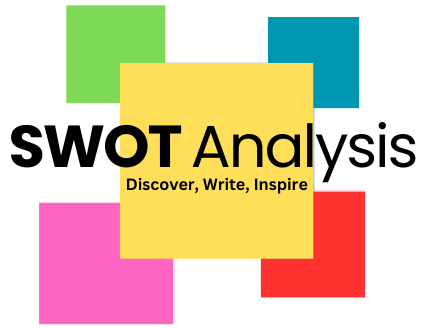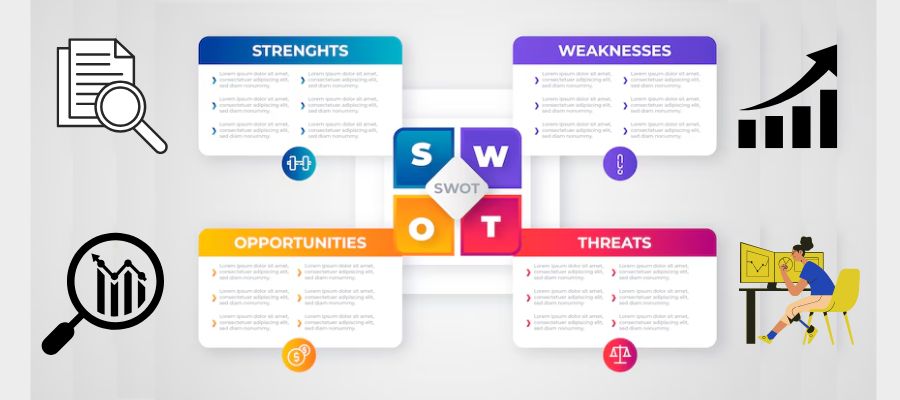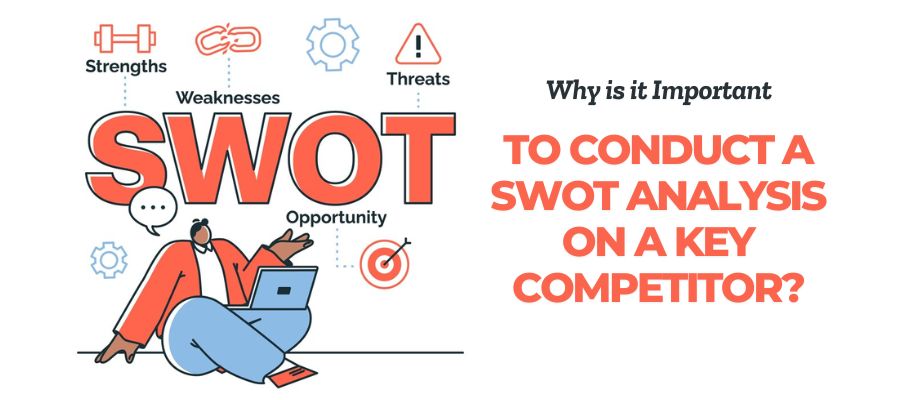SWOT Analysis is a strategic planning tool used to evaluate an organization’s internal strengths and weaknesses, as well as external opportunities and threats. This analytical framework helps businesses identify areas to improve, leverage advantages, and minimize risks in achieving their goals. The acronym “SWOT” stands for:
- Strengths: Internal attributes that give a company a competitive advantage.
- Weaknesses: Internal factors that hinder progress or success.
- Opportunities: External conditions that a company can exploit for growth.
- Threats: External factors that could negatively impact the organization.
By conducting a SWOT analysis, companies can create a strategic plan that aligns with their mission and vision statements, ensuring resources are used effectively.
When Considering SWOT Analysis, What Is an Example of an Organizational Weakness?
A. Lack of Skilled Workforce
An example of an organizational weakness is the lack of a skilled workforce. This weakness arises when an organization cannot find or retain qualified employees to meet its operational needs.
B. How This Weakness Manifests
- Operational Delays: Untrained staff may struggle to meet deadlines.
- Customer Complaints: Errors and slow service lead to dissatisfaction.
- Financial Losses: Increased turnover and training costs hinder financial performance.
C. Real-World Implications
Organizations with an inadequate workforce may experience reduced market share, struggle with minimal competition, and fail to implement effective marketing strategies. For instance, a bike store gets customized parts from local manufacturers but cannot meet delivery schedules due to untrained staff.
Understanding Organizational Weaknesses
A. Definition in a SWOT Context
Organizational weaknesses are internal limitations or deficiencies that reduce an organization’s ability to achieve its goals. These could include poor leadership, outdated technology, or inferior marketing strategies.
B. Common Types of Organizational Weaknesses
- Resource Limitations: Lack of funding or raw materials.
- Inadequate Technology: Obsolete technology impeding operations.
- Poor Strategic Management: Weak strategic control and planning processes.
- Low Employee Morale: Dissatisfied employees leading to high turnover.
C. Impact on Performance
Weaknesses can prevent a company from leveraging strengths and opportunities. For example, without skilled workers, a business may fail to meet turnaround times or remain competitive in the market.
Strategies for Addressing Organizational Weaknesses
A. Identifying Solutions
To overcome weaknesses, organizations should:
- Conduct focus groups to gather feedback.
- Use tools like Porter’s Five Competitive Forces to assess external pressures.
- Analyze internal and external factors to identify improvement areas.
B. Employee Training and Development
Investing in workforce training enhances skills and boosts morale. For example:
- Providing expert-verified answers and resources from platforms like Quizlet and Chegg.com.
- Offering tailored programs for employees in high-demand roles.
C. Leveraging External Resources and Partnerships
Organizations can:
- Partner with local manufacturers to source quality products.
- Use third-party consultants to improve strategic management.
- Adopt advanced technology to replace outdated systems.
By addressing weaknesses, businesses can align their strategies to best fit the organization’s needs and improve overall financial performance.
Conclusion
SWOT analysis is a vital tool for identifying and addressing organizational weaknesses. Recognizing these areas allows businesses to implement targeted solutions, enhance performance, and secure a competitive advantage. By mitigating weaknesses and focusing on strengths, companies can adapt to changing environments and achieve long-term success.
FAQs
1. What is an organizational weakness in SWOT analysis?
An organizational weakness is an internal limitation that hinders a company’s ability to achieve its objectives. Examples include poor leadership, lack of resources, or outdated technology.
2. Why is identifying weaknesses important in SWOT analysis?
Identifying weaknesses helps organizations improve internal processes, allocate resources efficiently, and develop strategies to stay competitive.
3. How can poor leadership be considered a weakness?
Poor leadership impacts decision-making, employee morale, and the organization’s ability to respond to environmental factors and challenges.
4. How can weaknesses be addressed after identifying them in a SWOT analysis?
Organizations can implement targeted solutions such as workforce training, technological upgrades, and partnerships with external entities.
5. Can weaknesses in SWOT analysis change over time?
Yes. As the business environment evolves, weaknesses like outdated technology or resource shortages can be mitigated through strategic interventions.
By regularly conducting a SWOT analysis, companies can adapt to changes and identify strengths that build upon their success.





